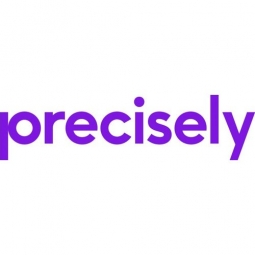公司规模
Mid-size Company
地区
- America
国家
- United States
产品
- Spectrum Context Graph
- CAMEO Segmentation
- GroundView™ Demographics
- Spectrum Data Quality
技术栈
- Data Deduplication
- Demographic Data Integration
- Customer Data Standardization
实施规模
- Enterprise-wide Deployment
影响指标
- Customer Satisfaction
- Revenue Growth
- Productivity Improvements
技术
- 分析与建模 - 预测分析
- 应用基础设施与中间件 - 数据交换与集成
适用行业
- 消费品
- 零售
适用功能
- 销售与市场营销
- 商业运营
服务
- 数据科学服务
- 系统集成
关于客户
The client is a leading producer of large-format art and digital graphics, offering a wide range of graphics solutions including wall decor, art reproductions, and professional photography. Specializing in large art and personalized 'art on demand', the company conducts much of its business through third-party websites. It aims to grow sales by better marketing to repeat customers and leveraging demographic data to identify new prospects. The company needed to consolidate and validate data from disparate sources to gain an accurate single view of each customer, which would help in targeted marketing and improving customer engagement.
挑战
The company faced challenges with a large base of repeat customers purchasing through third-party retailers, leading to duplicate customer records and inaccurate or incomplete customer addresses. This situation hindered the company's ability to determine lifetime customer value and overlay additional demographic data to identify new opportunities. The company needed to consolidate and validate data from disparate sources to gain an accurate single view of each customer. With a planned targeted direct mail campaign approaching, the company engaged Precisely to learn more about its Spectrum solution, a technology platform designed to validate, standardize, and enhance customer data.
解决方案
The art company began by consolidating all its data sources into the Precisely Spectrum Context Graph, using Precisely matching engines and tools to deduplicate customer records. This process resulted in a 'true' customer base of 1.5 to 1.8 million clients, significantly less than the 3 million recorded before deduplication. The company then integrated Precisely GroundView™ Demographics with the customer data, which provides over 8,200 demographic and economic variables for multiple layers of geography. This integration helped the company build detailed profiles of target customers and prospects. Precisely deployed CAMEO, its consumer segmentation demographics solution, to validate and link customer address information to the demographic data, giving the art company a deeper understanding of customers, including where they live and how they behave. Using GroundView™ and CAMEO, the company identified its target market as high-net-worth individuals, enabling it to refine the messaging and distribution of its direct mail campaign. The company leveraged the single customer view to segment its customer data and develop geofences around specific venues, feeding that data into specific marketing campaigns to tailor direct mail, email, and online ads to reach the right individuals at the right time.
运营影响
数量效益

Case Study missing?
Start adding your own!
Register with your work email and create a new case study profile for your business.
相关案例.
.png)
Case Study
Improving Vending Machine Profitability with the Internet of Things (IoT)
The vending industry is undergoing a sea change, taking advantage of new technologies to go beyond just delivering snacks to creating a new retail location. Intelligent vending machines can be found in many public locations as well as company facilities, selling different types of goods and services, including even computer accessories, gold bars, tickets, and office supplies. With increasing sophistication, they may also provide time- and location-based data pertaining to sales, inventory, and customer preferences. But at the end of the day, vending machine operators know greater profitability is driven by higher sales and lower operating costs.

Case Study
Improving Production Line Efficiency with Ethernet Micro RTU Controller
Moxa was asked to provide a connectivity solution for one of the world's leading cosmetics companies. This multinational corporation, with retail presence in 130 countries, 23 global braches, and over 66,000 employees, sought to improve the efficiency of their production process by migrating from manual monitoring to an automatic productivity monitoring system. The production line was being monitored by ABB Real-TPI, a factory information system that offers data collection and analysis to improve plant efficiency. Due to software limitations, the customer needed an OPC server and a corresponding I/O solution to collect data from additional sensor devices for the Real-TPI system. The goal is to enable the factory information system to more thoroughly collect data from every corner of the production line. This will improve its ability to measure Overall Equipment Effectiveness (OEE) and translate into increased production efficiencies. System Requirements • Instant status updates while still consuming minimal bandwidth to relieve strain on limited factory networks • Interoperable with ABB Real-TPI • Small form factor appropriate for deployment where space is scarce • Remote software management and configuration to simplify operations

Case Study
Digital Retail Security Solutions
Sennco wanted to help its retail customers increase sales and profits by developing an innovative alarm system as opposed to conventional connected alarms that are permanently tethered to display products. These traditional security systems were cumbersome and intrusive to the customer shopping experience. Additionally, they provided no useful data or analytics.

Case Study
How Sirqul’s IoT Platform is Crafting Carrefour’s New In-Store Experiences
Carrefour Taiwan’s goal is to be completely digital by end of 2018. Out-dated manual methods for analysis and assumptions limited Carrefour’s ability to change the customer experience and were void of real-time decision-making capabilities. Rather than relying solely on sales data, assumptions, and disparate systems, Carrefour Taiwan’s CEO led an initiative to find a connected IoT solution that could give the team the ability to make real-time changes and more informed decisions. Prior to implementing, Carrefour struggled to address their conversion rates and did not have the proper insights into the customer decision-making process nor how to make an immediate impact without losing customer confidence.









